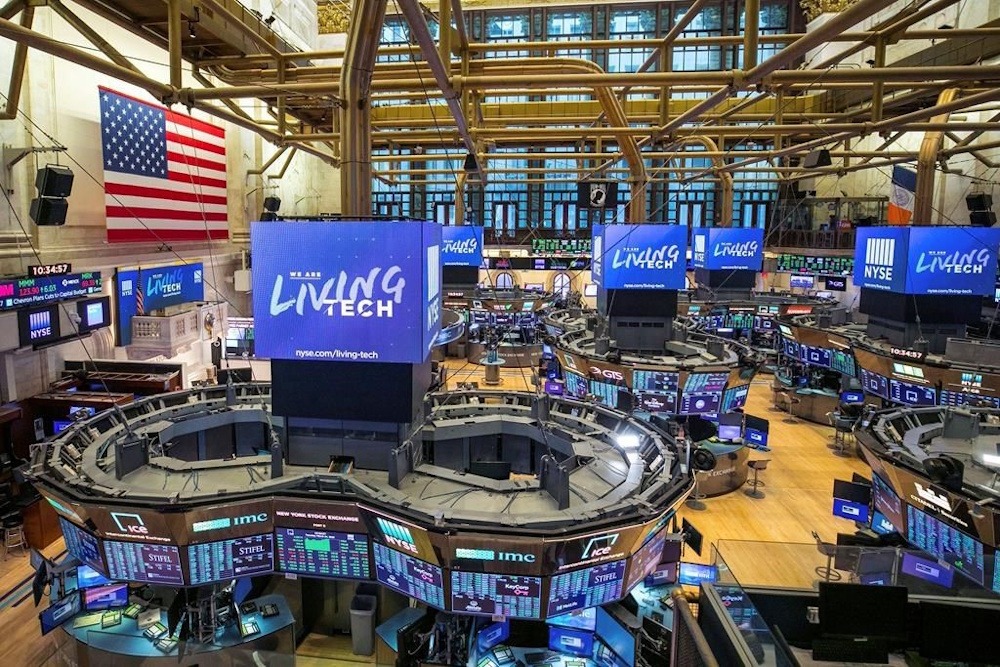
The Nasdaq reached unprecedented levels, buoyed by the publication of inflation data that was more subdued than anticipated. Soft inflation data has elevated market participants’ expectations regarding a potential interest rate cut by the Fed this month. All three major stock indexes concluded the trading session in positive territory. For the week as a whole, these three indexes concluded in positive territory as well. The Dow Jones Industrial Average appreciated 1% or 472.51 points to close at 47,207.12, marking the index’s first closing in history above the technically crucial 47,000 barrier. Significantly, 19 components of the 30-stock index concluded in positive territory, whereas 11 ended in negative territory. At the intraday high, the blue-chip index reached a record 47,326.73.
The tech-heavy Nasdaq Composite concluded at 23,204.87, reflecting a 1.2% increase or 263.07 points, propelled by the robust performance of major technology firms. This represented a new peak closing for the index. At the intraday high, the tech-laden index reached a historic level of 23,261.26. The major gainer of the index was Advanced Micro Devices Inc. The stock price of the semiconductor giant increased by 7.6%. Advanced Micro Devices currently holds a Zacks Rank of 3, indicating a Hold position. The S&P 500 increased by 0.7%, concluding at 6,791.69, which marks a new closing high for this benchmark index. At the intraday high, the broad-market index reached a historic 6,807.11. Among the 11 broad sectors of the market index, six concluded in positive territory, whereas five found themselves in negative territory.
The Financials Select Sector SPDR rose 1.1%, the Utilities Select Sector SPDR increased by 1.2%, and the Technology Select Sector SPDR experienced a rise of 1.6%, respectively. On the other hand, the Energy Select Sector SPDR tumbled 1%. The fear gauge, the CBOE Volatility Index, experienced a decline of 5.4%, settling at 16.37. On Friday, the trading volume reached 19.04 billion shares, which is below the 20-session average of 20.75 billion shares. On the NYSE, the ratio of advancers to decliners stood at 2.18-to-1. On Nasdaq, a ratio of 2.20-to-1 indicated a preference for advancing issues. The S&P 500 achieved 34 new 52-week highs while registering four new 52-week lows. The Nasdaq Composite recorded 124 new 52-week highs alongside 44 new 52-week lows. On October 24, the Department released the consumer price index data for September. The data was released later than anticipated owing to the ongoing U.S. government shutdown, which now ranks as the second largest in history. The headline CPI for September registered a month-over-month increase of 0.3%, falling short of the Zacks Consensus Estimate of 0.4%.
The figure for August stood at 0.4%. In September, the headline CPI experienced a year-over-year increase of 3%, surpassing the 2.9% recorded in August, yet falling short of the consensus expectation of 3.1%. Nonetheless, the September reading marked the highest level since May, surpassing the 12-month average of 2.7%. In September, the Core CPI, which excludes the more volatile categories of food and energy, rose by 0.2% on a month-over-month basis, falling short of the Zacks Consensus Estimate of 0.3%. The metric for August registered a 0.3% increase, representing the most robust monthly growth observed in the past six months. In September, the core CPI experienced a year-over-year increase of 3%, falling short of the consensus estimate of 3.1%. The figure for August remained at 3.1%. In light of the favorable inflation data, market participants are anticipating additional reductions in interest rates within the year. Reports indicates a 98.9% likelihood of a 25 basis point reduction in the Fed fund rate in October, alongside a 91.8% probability of an additional 0.25% decrease in December.
